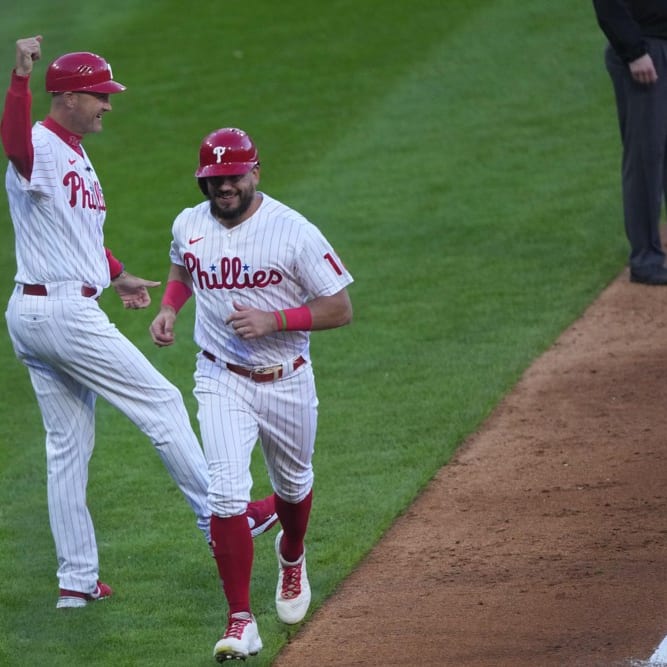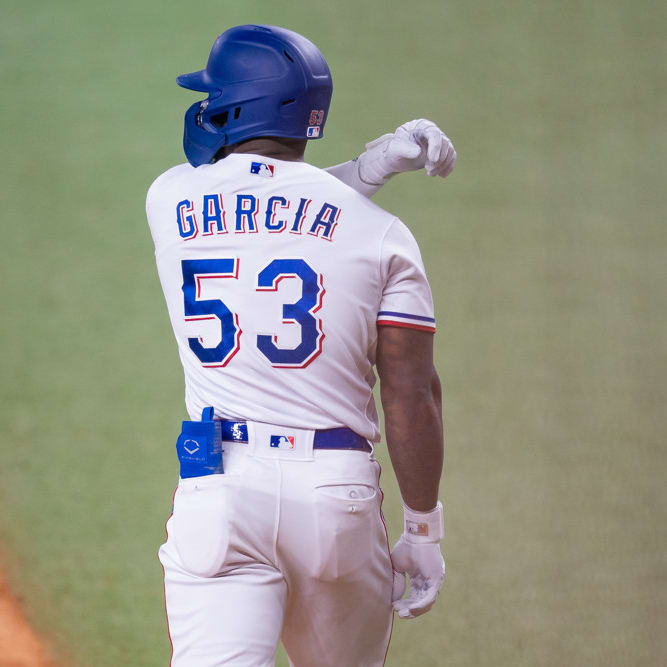This article is part of our The Saber's Edge series.
Many fantasy owners spend the entire offseason pouring over stats and video trying to find an edge. The stats eventually get old and stagnant because they are stationary for six months. When a season starts, owners can begin to see where their projections were right and wrong as players begin to compile stats. With no other new data to use, owners begin to put way too weight on these early season hot and cold starts.
Besides the first month of the season, I believe the season's last month pulls the second most weight in the minds of fantasy owners. Owners are trying to find that one player who has turned the corner and will be next year's big break out. If anyone was around in 2009, they scoffed at the notion of Jose Bautista's ten September home runs meaning much. Well owners did notice the next season when he led the league with 54 home runs. Looking at historical numbers, Jose Bautista's breakout is more of the exception than the norm. Here is a look at how a good September can translate to the next season's performance.
Let me start with some math parameters.
- A hitter will have at least 360 plate appearances in season 1 and season 2. Also they will have 60 plate appearances from September 1st to the end of season.
- The data is limited to the top 100 players who saw the largest late positive change.
- The 2002 to 2015 season were examined.
Many fantasy owners spend the entire offseason pouring over stats and video trying to find an edge. The stats eventually get old and stagnant because they are stationary for six months. When a season starts, owners can begin to see where their projections were right and wrong as players begin to compile stats. With no other new data to use, owners begin to put way too weight on these early season hot and cold starts.
Besides the first month of the season, I believe the season's last month pulls the second most weight in the minds of fantasy owners. Owners are trying to find that one player who has turned the corner and will be next year's big break out. If anyone was around in 2009, they scoffed at the notion of Jose Bautista's ten September home runs meaning much. Well owners did notice the next season when he led the league with 54 home runs. Looking at historical numbers, Jose Bautista's breakout is more of the exception than the norm. Here is a look at how a good September can translate to the next season's performance.
Let me start with some math parameters.
- A hitter will have at least 360 plate appearances in season 1 and season 2. Also they will have 60 plate appearances from September 1st to the end of season.
- The data is limited to the top 100 players who saw the largest late positive change.
- The 2002 to 2015 season were examined.
wRC+
If there is a current holy grail for an overall offense stat, it is wRC+. A quick way to explain wRC+ is "a rate statistic for hitters that weights each offensive action and controls for league and park effects" or you can read the long version. While it doesn't exactly correlate with fantasy stats, it does give a snap shot of a player's overall value and ability to stay on the field. Here is how a jump in wRC+ correlates to the next year's value.
Note: Some numbers don't add up exactly because of rounding errors.
Time frame: Average wRC+
Season 1 (Full): 113.8
Season 1 (September): 180.3
Difference (Sept. Season 1 – Full Season 1): +66.5
Season 2 (Full): 111.6
Difference (Full Season 2 – Sept. Season 1): -68.7
Difference (Full Season 2 – Full Season 1): -2.2
In overall production, an abnormally productive September doesn't mean a better season next year.
Like I said previously, wRC+ is not a common fantasy stat, so I will move on to four more commonly used stats, batting average (AVG), on-base percentage (OBP), home runs (HR), and stolen bases (SB). Maybe a player's overall value stays constant, but one of their individual September stats is predictive for next season.
Batting Average and On-base Percentage
Well, I will just start with these two since they are closely related and are rate stats. It will take a little number magic to work with stolen bases and home runs.
Time frame: Average AVG
Season 1 (Full): .276
Season 1 (September): .363
Difference (Sept. Season 1 – Full Season 1): +.087
Season 2 (Full): .276
Difference (Full Season 2 – Sept. Season 1): -.087
Difference (Full Season 2 – Full Season 1): -.001
A player's September AVG doesn't translate to better one next season. Now onto OBP.
Time frame: Average OBP
Season 1 (Full): .351
Season 1 (September): .442
Difference (Sept. Season 1 – Full Season 1): +.091
Season 2 (Full): .348
Difference (Full Season 2 – Sept. Season 1): -.094
Difference (Full Season 2 – Full Season 1): -.003
Like AVG, OBP shows no momentum to the next season.
Stolen Bases
Stolen bases are a little funky since they are not counting stat. I had to turn stolen bases into a counting stat and I used stolen base per plate appearance (SB/PA). Here are the results:
Time frame: Average SB/PA
Season 1 (Full): 3.7%
Season 1 (September): 6.9%
Difference (Sept. Season 1 – Full Season 1): +3.3%
Season 2 (Full): 3.3%
Difference (Full Season 2 – Sept. Season 1): -3.6%
Difference (Full Season 2 – Full Season 1): -0.4%
Different stat, same results. One item to note is the season-to-season values almost always drop some. In each of these instances, the average age for the players was over 28-years-old. With stats like stolen bases, the decline will be more noticeable.
Home Runs
Like stolen bases, I needed to convert home runs into a rate stat. I went with home runs per plate appearance (HR/PA).
Time frame: Average HR/PA
Season 1 (Full): 4.0%
Season 1 (September): 7.7%
Difference (Sept. Season 1 – Full Season 1): +3.7%
Season 2 (Full): 4.0%
Difference (Full Season 2 – Sept. Season 1): -3.8%
Difference (Full Season 2 – Full Season 1): -0.1%
Nothing again. No real surprise. A strong September doesn't mean the player will continue the positive trend into next season. A player is more likely to produce like he did over the entire season than that last month by a long ways.
So who are the 2015 hot September hitters who may be overvalued? Here is a few hitters who may have some late helium.
I saw Castro as trade fodder this offseason with Addison Russell and Javier Baez looking to take over the Cubs middle infield. He is making it tough for Joe Maddon to take him out of the lineup after hitting .397/.426/.683 so far this month. His value could end up all over the place depending if he is traded and what team is he traded to. Also if he has some postseason heroics, his value could jump. A good month or two may help to inflate his value which has been substandard the past two seasons.
People were on the edge with Choo off after his disappointing 2014 with a .242 AVG, 13 HR, and 3 SB after being near .290 AVG, 20 HR, and 20 SB for about five seasons. When he hit .096/.254/.173 to start off April most people considered him toast. He has been borderline good since then by hitting .295/.389/.494 with 20 HR and 4 SB. I don't expect the 32-year-old to raise his SB total, but the other numbers should stay. It would be interesting to see how he would have been looked at if his first month and last month's stats (.410/.524/.640) were swapped. I don't see
Choo getting over valued too much with his disappointing 2014 season and horrible start to the 2015 season. It will be interesting to see where he ends up getting valued in the 2016.
Like Choo, Betts's 2016 value is hard to judge right now. He has ability to consistently put up a .300 AVG with 20 HR/20 SB. His biggest flaw this season was a low AVG early in the season. Here are stats by month
Month: HR, SB, AVG
Apr: 2, 5, .230
May: 3, 3, .259
Jun: 3, 4, .330
Jul: 2, 1, .239
Aug: 3, 4, .314
Sep: 3, 3, .382
While his home run total only varied by one, his batting average has varied by .152 points. Will owners remember this BABIP (.429) driven month and give him a boost or the first month and its .261 BABIP.
Thanks to FanGraphs.com from the data.










